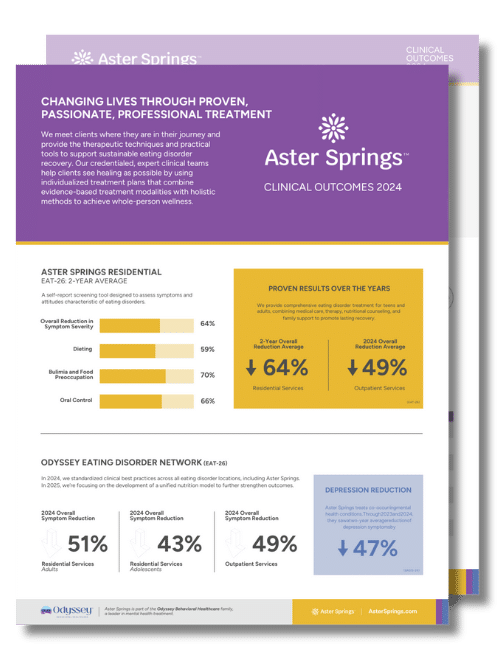Outcomes
Clinical Outcomes + Key Findings
Changing lives through proven, passionate, professional treatment.
We meet clients where they are in their journey and provide therapeutic techniques and practical tools to support sustainable recovery from eating disorders. Our credentialed, expert clinical teams help clients see long-term healing as a real possibility by using individualized treatment plans that combine evidence-based treatment modalities with holistic therapy methods to achieve whole-person wellness.
Proven Results. Real Recovery.
Download the Aster Springs Outcomes Report to see measurable progress from our comprehensive eating disorder programs.
How We measure our results
Care Informed by Research + Training
We utilize three evidence-based outcome measurement tools to monitor client progress, assess program effectiveness, and optimize treatment plans. In 2024, we enhanced this framework by adding the Brief Psychiatric Rating Scale (BPRS), a validated tool for assessing psychiatric symptom severity. This addition complements our existing assessments and further strengthens our ability to track meaningful clinical outcomes in mental health, addiction, and eating disorder recovery.
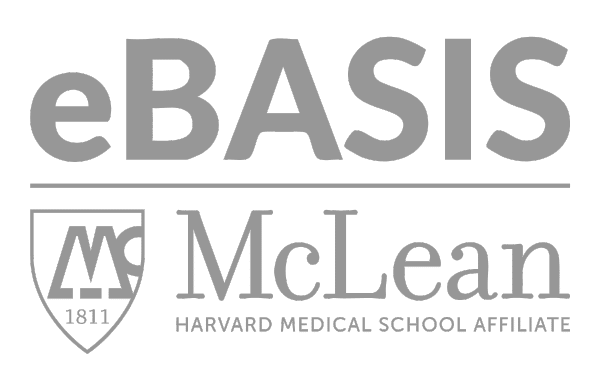


Eating Attitudes (EAT-26)
Aster Springs uses EAT-26, a leading standardized self-report measure of eating disorder symptoms and concerns. This assessment features a six-point Likert scale and includes measures for behavioral symptoms and body mass index (BMI). It provides an overall score along with three subscale scores — dieting, bulimia and food preoccupation, and oral control.
Behavior + Symptom Identification Scale (BASIS-24)
Aster Springs also utilizes BASIS-24, a comprehensive assessment tool that measures a wide range of symptoms across the diagnostic spectrum. Using a five-point Likert scale, its 24 questions generate an overall score and six subscale scores covering depression, relationships, self-harm, emotional lability, psychosis, and substance use.
EAT-26 Subscale Interpretation Guide
1. Diet
This involves intense focus on calorie counts, carbohydrates, and sugar intake, often driven by a strong desire to be thinner.
2. Bulimia + food preoccupation
This includes behaviors like purging after meals and persistent, excessive thoughts about food.
3. Oral control
An individual's perceived need — or lack thereof — for self-restraint in eating behaviors.

Clinical Outcomes 2024
2024 Client Demographics + Diagnoses
We specialize in comprehensive residential and outpatient eating disorder treatment for adults and adolescents of all genders. Our extensive, personalized approach combines evidence-based therapies, medical support, and a whole-person approach that addresses the unique needs of each individual.
Ages
Diagnoses
Note: Percentages may not equal 100 due to rounding.
Aster Springs Residential
EAT-26 | 2-Year Average
EAT-26 is a self-report screening tool designed to assess symptoms and attitudes characteristic of eating disorders.
2-Year Overall Symptom Reduction Average
(EAT-26)
2-Year Overall Symptom Reduction Average
(EAT-26)
Odyssey Eating Disorder Network (EAT-26)
In 2024, we standardized clinical best practices across all eating disorder locations, including Aster Springs. In 2025, we’re focusing on the development of a unified nutrition model to strengthen outcomes further.
Depression Reduction
(BASIS-24)
Aster Springs treats co-occurring mental health conditions. Through 2023 and 2024, we saw a two-year average reduction in depression symptoms of:
2024 Overall Symptom Reduction
2024 Overall Symptom Reduction
Take the next step at Aster Springs.
Call us today to connect immediately, or complete our form to have an admissions specialist reach out to you.
Your privacy is our priority. All communication is completely confidential.
Your privacy is our priority. All communication is completely confidential.


